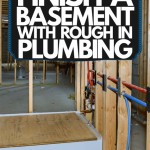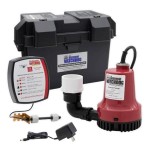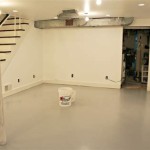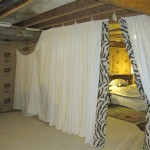Vapor Barrier for Concrete Basement Floor: A Comprehensive Guide
Basements, while offering valuable extra space, are susceptible to moisture issues due to their below-ground location. A concrete basement floor, even when seemingly dry, can allow moisture vapor to seep through, leading to potential problems like mold growth, musty odors, and damage to stored items. Implementing a vapor barrier system is a crucial step in mitigating these risks and ensuring a dry, usable basement environment.
Understanding Vapor Barriers
A vapor barrier, also known as a vapor retarder, is a material designed to restrict the passage of moisture vapor through a building assembly. It acts as a protective layer, preventing moisture from migrating from the ground into the basement space. This is particularly important in concrete floors, as concrete is porous and can readily absorb and transmit moisture.
Types of Vapor Barriers for Concrete Basement Floors
Several types of vapor barriers are suitable for concrete basement floors, each with its own set of advantages and disadvantages. Choosing the right type depends on factors such as the existing floor condition, intended use of the basement, and budget.
*
Polyethylene Sheeting:
This is one of the most common and cost-effective vapor barrier options. It comes in various thicknesses (commonly 6-mil), with thicker options offering greater durability and moisture resistance. *Visqueen:
A specific brand of polyethylene sheeting, often used synonymously with the material itself, Visqueen is known for its quality and widespread availability. *Cross-Laminated High-Performance Vapor Barriers:
These advanced barriers offer superior moisture protection and puncture resistance compared to standard polyethylene. *Liquid-Applied Membrane:
This type of barrier is applied as a liquid coating and cures to form a seamless, waterproof membrane. It's particularly useful for irregular surfaces or areas with penetrations.Choosing the Right Vapor Barrier
Selecting the appropriate vapor barrier requires careful consideration of several factors:
*
Moisture Levels:
For basements with high moisture levels, a thicker polyethylene sheeting or a cross-laminated vapor barrier is recommended. *Future Flooring:
The type of flooring planned for the basement will influence the vapor barrier choice. Some flooring materials require specific vapor barrier properties. *Budget:
Polyethylene sheeting is generally the most budget-friendly option, while liquid-applied membranes and cross-laminated barriers are more expensive. *Installation Complexity:
Liquid-applied membranes can be more complex to install correctly, while polyethylene sheeting is relatively straightforward.Installing a Vapor Barrier on a Concrete Floor
Proper installation is crucial for the effectiveness of a vapor barrier. Here are general steps for installing a polyethylene sheet vapor barrier:
*
Prepare the Surface:
Clean the concrete floor thoroughly, removing any debris, dust, or loose concrete. Repair any cracks or imperfections in the concrete surface. *Overlap and Seal Seams:
Overlap adjacent sheets of polyethylene by 6-12 inches and seal the seams with specialized vapor barrier tape. Ensure the tape adheres firmly to prevent moisture penetration. *Extend the Barrier:
Extend the vapor barrier up the walls several inches and seal it to the wall. This creates a continuous barrier against rising damp. *Protect the Barrier:
Cover the installed vapor barrier with a protective layer, such as a thin layer of concrete or a subfloor, to prevent damage during subsequent construction phases.Importance of Proper Installation
A poorly installed vapor barrier can be just as detrimental as having no barrier at all. Gaps, tears, or improperly sealed seams can create pathways for moisture to infiltrate the basement, negating the purpose of the barrier.
*
Continuous Barrier:
Ensure a continuous, unbroken barrier across the entire floor area. *Seal all Penetrations:
Any penetrations through the floor, such as pipes or posts, must be carefully sealed around the vapor barrier. *Professional Installation (Optional):
For complex installations or challenging conditions, consider consulting a professional contractor experienced in vapor barrier installation.Benefits of a Vapor Barrier
Installing a vapor barrier in a concrete basement floor offers a number of significant advantages:
*
Moisture Control:
Reduces the amount of moisture vapor that can pass through the concrete floor. *Mold Prevention:
By controlling moisture, the risk of mold growth is significantly minimized. *Improved Air Quality:
Helps prevent musty odors and improve the overall air quality in the basement. *Protection of Stored Items:
Safeguards belongings stored in the basement from moisture damage. *Increased Comfort:
Contributes to a drier, more comfortable basement environment.Maintaining Your Vapor Barrier
While a vapor barrier offers long-term protection, periodic inspection and maintenance are essential to ensure its continued effectiveness.
*
Regular Inspections:
Check for any signs of damage, such as tears, punctures, or loose seams. *Prompt Repairs:
Address any damage immediately to prevent moisture intrusion. *Proper Ventilation:
Ensure adequate ventilation in the basement to further reduce moisture buildup.
Underslab Retrofits Sealing Slabs Waterproof Magazine

Underslab Retrofits Sealing Slabs Waterproof Magazine

How To Install The Moisture Barrier Over Concrete Subfloor Furniture Woodworking Wonderhowto

Westcoat S New Moisture Vapor Barrier Ec 15 Specialty Coating Systems

Our Complete Crawl Space Vapor Barrier System

Moisture Barrier Why Do You Need A

What Is A Vapor Barrier Paveman Coatings

Vapor Barrier For A Basement Floor Options Installation And Cost
Is It Necessary To Have A Moisture Barrier Poly Between Basement Concrete Floor And Wood Flooring Quora

Vapor Barriers For Basements And Crawlspaces Greenbuildingadvisor
Related Posts







